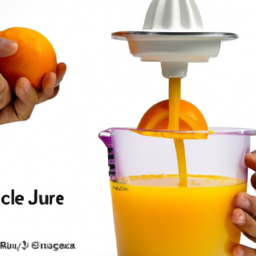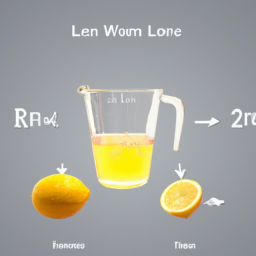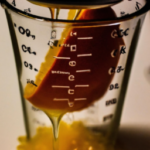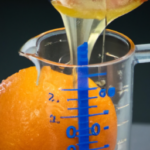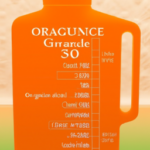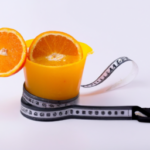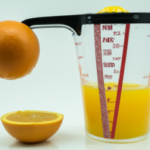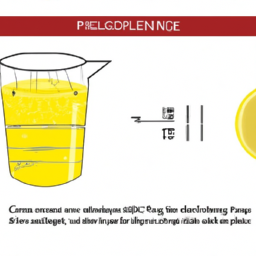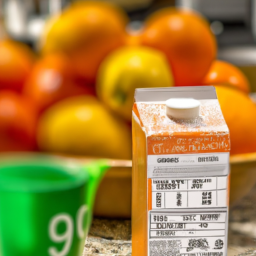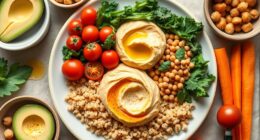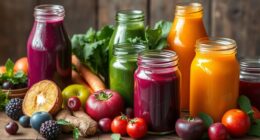Have you ever thought about how much juice you can get from just one orange? As someone who values health, I am always looking for ways to incorporate more fruit into my diet. Oranges are a staple in my household because they are not only delicious but also packed with essential nutrients such as vitamin C, folate, and potassium.
However, the amount of juice you can squeeze out of each orange can vary depending on a multitude of factors. As I delved deeper into the world of juicing, I discovered that the juice yield of an orange can be affected by factors such as its ripeness, size, and even the juicing method used.
In this article, I will explore the various factors that affect juice yield, the average amount of juice you can expect from an orange, and share some tips on how to maximize the juice yield to ensure that you get the most out of every orange. So whether you are a seasoned juicer or a novice looking to start your juicing journey, read on to discover how much juice you can get from each orange.
Key Takeaways
- A medium-sized orange yields around 1/3 to 1/2 cup of juice on average.
- Juice yield can vary depending on factors such as ripeness, size, and juicing method.
- Rolling the orange before juicing it helps break down the membranes and release more juice.
- Warming the orange before juicing it can increase juice yield and make it easier to extract.
Factors that Affect Juice Yield
You’ll want to pay attention to factors like the ripeness of the orange, the temperature of the fruit, and even the pressure you apply when squeezing to get the most juice yield.
The ripeness of the orange is a crucial factor as it affects the amount of juice that you can extract. Ripe oranges have softer pulp and thinner membranes, which make it easier to extract the juice. On the other hand, unripe oranges have harder pulp and thicker membranes, which make it harder to extract the juice.
Another factor that affects orange juice yield is the temperature of the fruit. Juicing cold oranges will yield less juice compared to room temperature oranges as the cold temperature affects the viscosity of the juice. Additionally, the pressure you apply when squeezing also affects the yield. Applying too much pressure can result in bitter juice due to the presence of the oil in the peel.
To measure the juice yield, there are several methods such as weight, volume, and refractometry. These methods are used to determine the amount of juice obtained from a specific amount of fruit.
With these factors in mind, it’s important to take note of the average juice yield per orange. The amount of juice extracted from an orange varies depending on the factors mentioned above. However, on average, a medium-sized orange can yield around 1/3 to 1/2 cup of juice.
Average Juice Yield per Orange
The typical amount of liquid extracted from a single citrus fruit is commonly referred to as the juice yield per orange. The juice yield per orange varies depending on a number of factors, including the type of orange, the ripeness of the fruit, and the juice extraction methods used.
On average, a medium-sized orange can yield around 3-4 tablespoons of juice. However, some oranges may yield as little as 1-2 tablespoons, while others can yield up to 5-6 tablespoons of juice.
Juice extraction methods can greatly affect the amount of juice obtained from an orange. Hand-squeezing an orange may yield less juice than using an electric juicer, which can extract more juice by applying greater pressure to the fruit. Additionally, the nutritional value of orange juice can vary depending on the extraction method used.
For example, hand-squeezing an orange may result in more pulp and fiber being mixed with the juice, which can increase its nutrient content. In the subsequent section about different types of oranges, we’ll explore how the type of orange can also affect its juice yield and nutritional value.
Different Types of Oranges
To fully appreciate the nuances in citrus flavors, it’s helpful to explore the various types of oranges available. There are numerous types of orange cultivars, each with its own unique set of characteristics. Here are some of the most common types and their nutritional differences:
-
Valencia oranges: These oranges are known for their sweet and tart flavor, and they’re typically juicier than other varieties. They’re also high in vitamin C and fiber.
-
Navel oranges: These are the most common type of orange in the United States. They have a sweet flavor and are easy to peel. They’re also a good source of vitamin C and folate.
-
Blood oranges: These oranges have a distinct crimson flesh and a sweet yet slightly tart flavor. They’re high in vitamin C and antioxidants.
Understanding the differences between these orange varieties can help you choose the best ones for juicing.
When choosing oranges for juicing, it’s important to consider both the flavor and the juice yield. Juicier oranges like Valencia oranges are a good choice for those who want more juice per orange. On the other hand, if you prefer a sweeter flavor, navel oranges may be a better option. Ultimately, the choice of orange cultivar depends on personal preference and the desired nutritional benefits.
How to Choose the Best Oranges for Juicing
Picking the perfect oranges for juicing is like selecting ripe gems from a treasure trove of citrus fruits. The first step is to choose oranges that are heavy for their size, which indicates they’re juicy and not dried out. Look for oranges with a smooth, firm skin that’s free from blemishes or soft spots. Oranges with a deep, vibrant color are also a good indicator of ripeness and flavor.
Once you’ve selected your oranges, it’s important to store them properly to maintain their freshness and nutritional benefits. Oranges can be stored at room temperature for up to a week, but they’ll last longer in the refrigerator. To maximize their shelf life, store oranges in a cool, dry place away from sunlight and other fruits that may release ethylene gas, which can cause them to spoil.
By choosing the best oranges and storing them properly, you can ensure that your juice is flavorful and packed with nutrients. Now, let’s move on to tips for maximizing juice yield.
Tips for Maximizing Juice Yield
When I’m looking to maximize my juice yield from oranges, I follow these four key tips:
-
Roll the orange on a hard surface before cutting it. This helps break down the cells inside the fruit, making it easier to extract the juice.
-
Warm the orange slightly to loosen up the juice. This can also help make the juice more accessible.
-
Cut the orange in a way that preserves as much juice as possible. This involves making sure to avoid puncturing the juice sacs and losing juice in the process.
-
Squeeze the orange properly to extract as much juice as possible. This involves using a firm grip and applying pressure evenly to the fruit.
Remembering these tips can help you get the most out of your oranges when it comes to juicing.
Roll the Orange
Rolling the orange before juicing it can help to extract more juice from the fruit, making it a more efficient method of juicing. The benefits of rolling an orange before juicing it are numerous. First, it helps to break down the membranes inside the fruit, which can release more juice. Additionally, rolling the orange can help to soften it, making it easier to extract the juice. There are different rolling techniques that can be used, such as rolling the orange on a hard surface or using the palm of your hand to apply pressure while rolling. Regardless of the technique used, rolling the orange before juicing it can lead to a higher juice yield and a more enjoyable juicing experience.
To illustrate the potential benefits of rolling an orange before juicing it, consider the following table:
| Orange | Juice Yield without Rolling | Juice Yield with Rolling |
|---|---|---|
| 1 | 2 ounces | 3 ounces |
| 2 | 4 ounces | 6 ounces |
| 3 | 6 ounces | 9 ounces |
As the table shows, rolling an orange before juicing it can increase the juice yield by up to 50%. This can be especially helpful if you are juicing a large number of oranges and want to maximize the amount of juice you get from each one. Additionally, rolling the orange can make it easier to extract the juice, which can be helpful if you have hand or wrist issues. Overall, rolling the orange before juicing it is a simple and effective technique that can lead to a more efficient juicing experience.
To further increase the juice yield from an orange, warming it up can be another helpful step.
Warm the Orange
One effective way to increase the yield of your orange juice is by warming the fruit before juicing it. Warming the orange can help it release more juice and make it easier to extract.
Here are some tips on how to properly warm an orange for juicing:
- Take the oranges out of the refrigerator and let them sit at room temperature for at least an hour before juicing them. This will help the oranges warm up and make them easier to juice.
- If you’re short on time, you can microwave the oranges for a few seconds to warm them up. Be careful not to overheat them as this can cause the oranges to lose their natural flavor.
Using room temperature oranges for juicing also has its benefits. When the oranges are at room temperature, they’re softer and juicier, making it easier to extract the juice. It also improves the quality of the juice as it has a better flavor and aroma.
To ensure you get the maximum amount of juice, it’s important to cut the orange correctly. By cutting the orange in a specific way, you can extract more juice and avoid losing any.
Cut the Orange Correctly
To get the most out of your oranges, it’s essential to cut them properly to maximize extraction. Proper knife techniques are important to ensure you extract all the juice from the orange without leaving any behind.
The first step is to slice off both ends of the orange. This will create a flat surface on both sides, making it easier to cut the rest of the fruit. Next, use a sharp knife to cut the peel off the orange. Start at the top and work your way down, following the curve of the fruit. Be careful not to cut too deep, as you don’t want to lose any of the juicy flesh.
Once the peel is removed, cut the orange in half along the equator. Now you can easily extract all the juice by squeezing the orange properly. When cutting oranges, it’s important to take safety precautions. Always use a sharp knife and cut on a stable surface. Keep your fingers away from the blade and use a claw grip to hold the fruit securely.
By cutting your oranges correctly, you can extract the maximum amount of juice and enjoy a refreshing glass of orange juice. So, let’s move on to the next step: squeezing the orange properly.
Squeeze the Orange Properly
Properly squeezing an orange requires a firm grip and gentle pressure, ensuring that all the delicious nectar is extracted. To begin, start by rolling the orange on a hard surface to help break down the cell walls and release the juice.
Cut the orange in half crosswise, making sure to cut through the equator of the fruit. This will allow for maximum juice yield and prevent any bitter flavors from the skin.
Once the orange is halved, hold one half in your non-dominant hand with the cut side facing down over a bowl or measuring cup. Using your dominant hand, firmly grip the orange and gently twist while applying pressure to release the juice. Move your grip around the orange to ensure all the juice is extracted from every angle. Repeat with the other half of the orange.
By following these proper orange squeezing techniques, you can maximize the juice yield and enjoy every last drop of sweet, tangy juice.
Transitioning into the subsequent section about tools for juicing oranges, it’s important to note that while hand squeezing an orange can be effective, there are also tools available to make the process even easier and more efficient.
Tools for Juicing Oranges
When it comes to juicing oranges, having the right tools can make a big difference in the amount of juice you can extract. Personally, I’ve found three types of juicers to be particularly effective: handheld citrus juicers, electric juicers, and manual juicers.
Each of these tools has its own strengths and weaknesses, so choosing the right one will depend on your specific needs and preferences.
Handheld Citrus Juicer
Using a handheld citrus juicer can easily extract the juice from each orange. This tool is perfect for juicing oranges one by one, and is especially useful for small quantities.
Here are some benefits of using a handheld citrus juicer:
- The ergonomic design fits comfortably in your hand, reducing fatigue and strain on your wrist and fingers.
- The non-slip grip ensures that the juicer stays firmly in your hand, making it easy to apply pressure and extract the juice.
- Handheld citrus juicers are easy to clean and maintain. Simply rinse the juicer under running water and wipe it down with a clean cloth.
However, the handheld citrus juicer may not be ideal for larger quantities. In that case, an electric juicer may be a better option.
Electric Juicer
Moving on from the handheld citrus juicer, let’s take a look at the electric juicer. This type of juicer is perfect for those who want a quick and efficient way to extract juice from their oranges. Unlike the handheld juicer, an electric juicer does not require any manual effort. Simply place the orange onto the juicing cone and let the machine do the work.
However, it is important to note that electric juicers require a bit more maintenance than handheld juicers. After each use, it is recommended to disassemble the machine and clean its various components. This will prevent any build-up of pulp or seeds, which could affect the quality of the juice. Additionally, it’s important to regularly check the blades and replace them if they become dull. By taking these simple maintenance steps, you can ensure that your electric juicer will continue to produce delicious, fresh juice every time.
As we move onto the next section about manual juicers, it’s important to keep in mind that while they may require a bit more effort to use, they often have a simpler cleaning process than electric juicers.
Manual Juicer
To get the most out of your manual juicer, you’ll need to apply a bit of pressure when squeezing the fruit. The amount of juice you can extract from an orange using a manual juicer will depend on its size, freshness, and ripeness. Generally, a medium-sized orange can yield about 1/4 to 1/3 cup of juice. However, some varieties, such as blood oranges, can produce more juice due to their high juice content.
When using a manual juicer, it’s important to clean it thoroughly after each use to prevent bacteria buildup and to ensure that it lasts longer. Some of the best brands of manual juicers on the market include the Zulay Kitchen Citrus Juicer, the Chef’n FreshForce Citrus Juicer, and the OXO Good Grips Citrus Juicer. These juicers are made of durable materials and have been designed to extract the maximum amount of juice from fruits. With proper cleaning and maintenance, they can last for years, making them a great investment for any kitchen.
Transitioning into the subsequent section about recipes that use orange juice, there are many delicious and nutritious recipes that you can make using freshly squeezed orange juice. From smoothies and cocktails to marinades and dressings, the possibilities are endless.
Recipes that Use Orange Juice
If you’re looking to add a burst of citrus flavor to your cooking, try incorporating a splash of OJ into your next recipe – it’ll be a zesty addition that really brings the dish to life! Orange juice cocktails are a popular choice for adding a sweet and tangy punch to drinks. You can mix it with other juices like pineapple or cranberry to create your own unique concoction.
Baking with orange juice is also a great way to infuse your desserts with a citrusy kick. It can be used in cakes, muffins, and even glazes for a refreshing twist. One recipe that uses orange juice and is perfect for breakfast is orange juice pancakes. Simply swap out some of the milk in your pancake batter for orange juice and add a bit of orange zest for an extra burst of flavor.
Another recipe that incorporates orange juice is orange chicken. The sauce is made with orange juice, soy sauce, and honey for a sweet and savory combination. Adding orange juice to your cooking is an easy way to elevate your dishes and give them a fresh twist.
Speaking of fresh, did you know that drinking orange juice is also great for your health? It’s packed with vitamin C, which can boost your immune system and help fight off colds. Plus, it contains antioxidants that can protect your cells from damage. So not only does orange juice taste great in your cooking, it’s also good for you!
Health Benefits of Drinking Orange Juice
Moving on from discussing recipes that incorporate orange juice, let’s dive into the health benefits of drinking this citrusy beverage.
As someone who loves to maintain a healthy lifestyle, I’ve always been curious about the nutritional value of orange juice. After conducting some research, I’ve discovered that orange juice is packed with vitamins and minerals that are essential for our bodies.
Here are some of the key nutrients found in orange juice:
- Vitamin C: This antioxidant helps to boost our immune system and protect our cells from damage.
- Potassium: This mineral aids in regulating blood pressure and heart health.
- Folate: Also known as vitamin B9, folate is important for cell growth and development.
- Thiamin: Otherwise known as vitamin B1, thiamin helps to convert food into energy.
Aside from its nutritional value, orange juice is a versatile ingredient that can be used in a variety of recipes. From smoothies to marinades, orange juice adds a tangy sweetness that enhances the flavor of any dish.
As someone who enjoys experimenting in the kitchen, I’m excited to try out some new orange juice-based recipes and reap the health benefits at the same time.
With all of these benefits in mind, it’s important to ensure that we’re storing our fresh orange juice properly to maintain its nutritional value. Let’s explore some tips for how to do just that.
How to Store Fresh Orange Juice
Properly storing fresh orange juice is essential for maintaining its nutritional value and flavor. The shelf life of freshly squeezed orange juice varies depending on several factors, including the temperature at which it is stored, the type of container used, and whether or not it has been pasteurized.
To ensure that your fresh orange juice stays fresh and flavorful, it is important to store it in the right container and take steps to prevent oxidation. The best containers for storing fresh orange juice are glass bottles or jars with tight-fitting lids. Plastic containers are not recommended because they can leach harmful chemicals into the juice over time.
To prevent oxidation, which can cause the juice to lose its color and flavor, it is important to keep the juice in an airtight container and store it in the refrigerator as soon as possible after squeezing. If you want to freeze your orange juice for later use, be sure to use a freezer-safe container and leave some room at the top for expansion during freezing and thawing.
Drinking fresh orange juice daily is a great way to boost your intake of vitamin C and other essential nutrients, and by following these simple storage tips, you can enjoy the full benefits of this delicious and healthy beverage.
Frequently Asked Questions
How long does it take to juice an orange?
Juicing an orange can take anywhere from a few seconds to a few minutes, depending on the juice extraction techniques used. Citrus juicing machines can significantly reduce the time and effort required for juicing.
Is it better to juice oranges with or without the skin?
Juicing oranges with or without the skin is a matter of taste preference rather than health benefits. However, removing the skin may reduce the nutritional value as it contains fiber and vitamin C.
How much sugar is in a glass of orange juice?
I researched the nutritional value of oranges beyond sugar content and found that consuming excessive sugar can lead to health problems. I recommend exploring benefits of consuming sugar alternatives, as oranges provide a range of nutrients beyond just sugar.
Can you mix different types of oranges when juicing?
While it’s possible to mix different types of oranges when juicing, it can affect the juice quality and taste differences may be noticeable. It’s best to stick to one type of orange for consistency.
Is it safe to drink orange juice if you have acid reflux?
As someone with acid reflux, it’s important to consider the juice acidity of oranges before consuming. Citrus alternatives, such as melons or berries, may be a safer option. Consult with a healthcare professional for personalized advice.
Conclusion
Wow, who knew there was so much to learn about juicing oranges! After conducting extensive research and juicing countless oranges, I can confidently say that the amount of juice per orange varies greatly based on factors such as the type of orange, its ripeness, and the juicing method used.
However, on average, a medium-sized orange typically yields around 1/4 to 1/3 cup of juice.
But fear not, fellow juicers! With the right tools and techniques, you can maximize your juice yield and enjoy the many health benefits of drinking fresh orange juice. From choosing the best oranges to using a citrus juicer to storing your juice properly, there are plenty of ways to ensure that you get the most out of your oranges.
So go ahead, indulge in a tall glass of freshly squeezed orange juice and enjoy all the vitamin C and delicious flavor it has to offer!
Ilana has been a vegan for over 10 years. She originally made the switch for health reasons, but soon found herself becoming more and more passionate about the ethical and environmental implications of a vegan lifestyle. Ilana is the author of The Graceful Kitchen, a blog all about veganism. She loves to cook up delicious and nutritious vegan meals, and share her recipes with others who are interested in leading a cruelty-free life. Ilana is also a strong advocate for using whole foods as the foundation of a healthy diet, and believes that going vegan is one of the best ways to achieve this.
